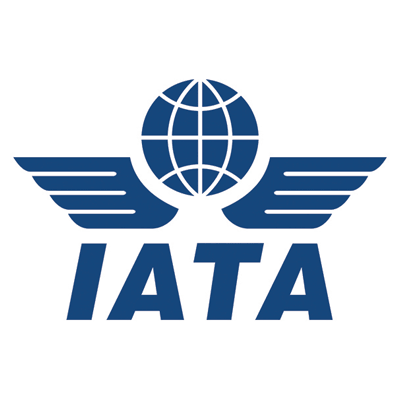Tracking airline industry performance in 2013 – World Air Transport Statistics released
- Like
- Digg
- Del
- Tumblr
- VKontakte
- Buffer
- Love This
- Odnoklassniki
- Meneame
- Blogger
- Amazon
- Yahoo Mail
- Gmail
- AOL
- Newsvine
- HackerNews
- Evernote
- MySpace
- Mail.ru
- Viadeo
- Line
- Comments
- Yummly
- SMS
- Viber
- Telegram
- Subscribe
- Skype
- Facebook Messenger
- Kakao
- LiveJournal
- Yammer
- Edgar
- Fintel
- Mix
- Instapaper
- Copy Link
Posted: 12 August 2014 | The International Air Transport Association | No comments yet
The International Air Transport Association published the 58th edition of the World Air Transport Statistics (WATS), a leading yearbook of the airline industry’s annual performance containing extensive statistical information and analysis…


The International Air Transport Association (IATA) published the 58th edition of the World Air Transport Statistics (WATS), a leading yearbook of the airline industry’s annual performance containing extensive statistical information and analysis.
“Commercial aviation began 100 years ago with a single airplane, a single passenger and a single route. Last year, as recorded in the WATS, the industry carried more than 3 billion passengers and nearly 48 million tonnes of cargo on nearly 100,000 flights per day, while the real price of air travel fell by 7.4%. Aviation’s annual contribution exceeds even these impressive figures. Its global economic impact is estimated at $2.4 trillion and it supports 3.4% of global GDP. By value, over a third of goods traded internationally are delivered by air and some 58.1 million jobs are supported by aviation,” said Tony Tyler, IATA’s Director General and CEO.
Snapshot of 2013 industry performance:
Passenger
- System-wide, airlines carried 3.129 billion passengers on scheduled services, an increase of 5.1% over 2012.
- Airlines in the Asia-Pacific region carried the largest number of passengers of any region. The regional ranking (based on total passengers carried on scheduled services by airlines registered in that region) is:
1. Asia-Pacific (1.012 billion passengers, an increase of 9.3%)
2. Europe (825.9 million passengers, up 3.4% over 2012)
3. North America (818.9 million, up 0.7% over 2012)
4. Latin America and the Caribbean (240.5 million, up 7.6%)
5. Middle East (157.9 million, an increase of 8.8%)
6. Africa (73.8 million, 5.6% up over 2012).
- The top countries by region based on passengers carried (total both-ways, international and domestic) were:
1. Africa: South Africa (20.4 million, a decline of 0.1% compared to 2012)
2. Asia-Pacific: People’s Republic of China (404.2 million, an increase of 11.8%)
3. Europe: United Kingdom (177.9 million, up 3.7% over 2012)
4. Latin America and Caribbean: Brazil (92.9 million, an increase of 4.5% over 2012
5. Middle East: United Arab Emirates (45.3 million, an increase of 11.7%),
6. North America: United States (618.1 million, an increase of 3.3% over 2012.)
- The United States is still the largest single air market in the world, in terms of total two-way traffic, international and domestic.
- The top five airlines ranked by total scheduled passengers carried were:
1. Delta Air Lines (120.6 million)
2. Southwest Airlines (115.3 million)
3. China Southern Airlines (91.5 million)
4. United Airlines (90.2 million)
5. American Airlines (86.8 million)
- The top three city-pairs based on passengers carried on international routes were:
1. Hong Kong-Chinese Taipei (4.9 million, down 11.5%)
2. Dublin-London (3.6 million, up 6.9%)
3. Jakarta-Singapore (3.4 million, up 8.6%)
- The top three city-pairs based on passengers carried on domestic routes were:
1. Jeju Seoul (9.58 million, up 1.4% over 2012)
2. Sapporo-Tokyo (9.17 million, up 4.7%)
3. Fukuoka-Tokyo (8.34 million, up 9.3%)
Cargo
- Globally, cargo experienced weak growth with freight tonne kilometers up only 1.8% compared to 2012. However, this represents a reversal of the 1.1% shrinkage over 2011.
- The top five airlines ranked by total scheduled freight tonnes carried were:
1. Federal Express (7.1 million)
2. UPS Airlines (4.1 million)
3. Emirates (2.1 million)
4. Korean Air (1.4 million)
5. Cathay Pacific Airways (1.3 million)
Consumer and Business
- Airlines added over 1,100 direct airport-pair services and 600,000 frequencies in 2013, for a new total of 50,000 direct airport-pair services and 31.5 million frequencies.
- The price of air travel in real terms fell by 7.4% compared to 2012
- The cost of shipping goods by air in real terms fell 7.1%
Fuel
- Fuel consumption represents about 2% of all fossil fuels burned worldwide for all purposes, or about 12% of the total amount of fossil fuels consumed by all transportation. The average price of jet fuel in 2013 decreased by 3.9% compared to 2012.
- Total estimated cost of fuel was $210 billion or 31% of airline operating costs.
- Between 2005 and 2013, fuel efficiency improved by 11%.
Airline Alliances
- Star Alliance maintained its position as the largest airline alliance in 2013 with 26.6% of total scheduled traffic (in revenue passenger kilometers), followed by SkyTeam (20.1%) and oneworld (15.4%).













